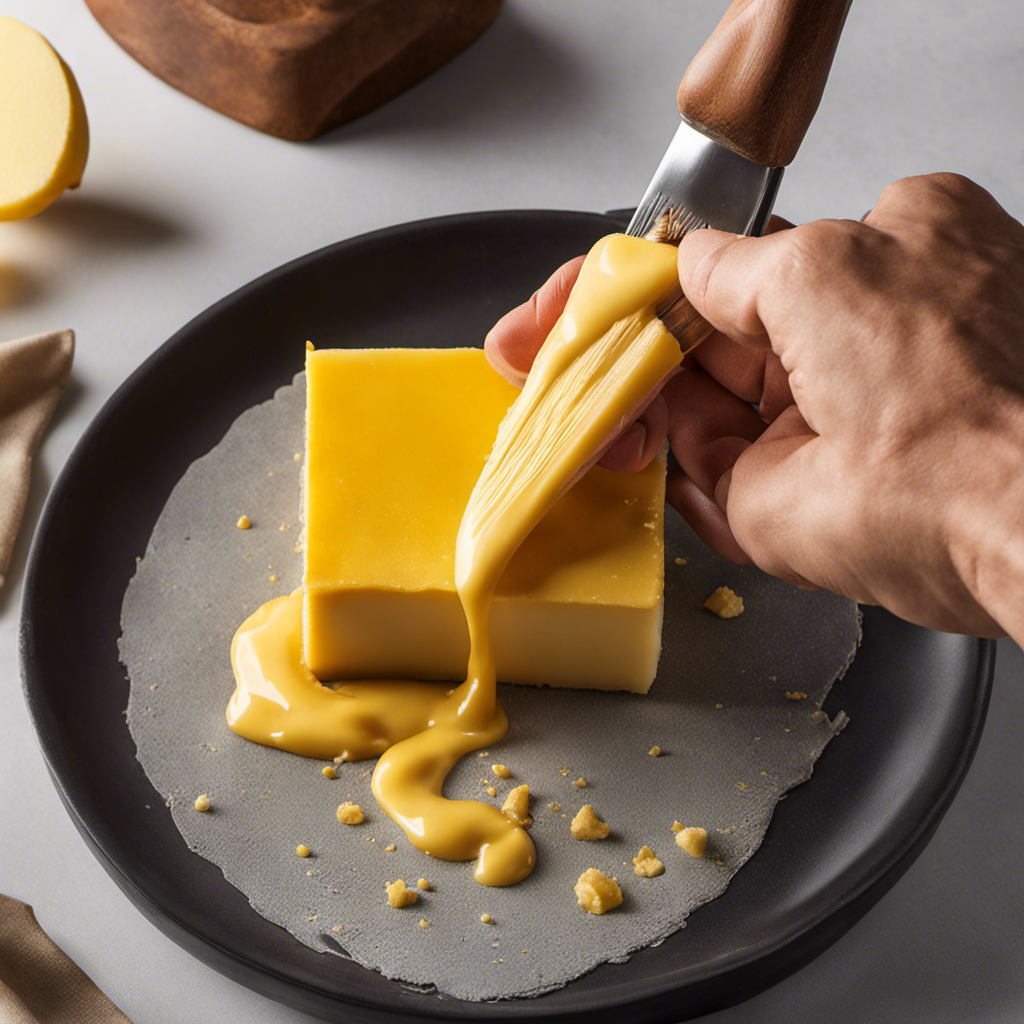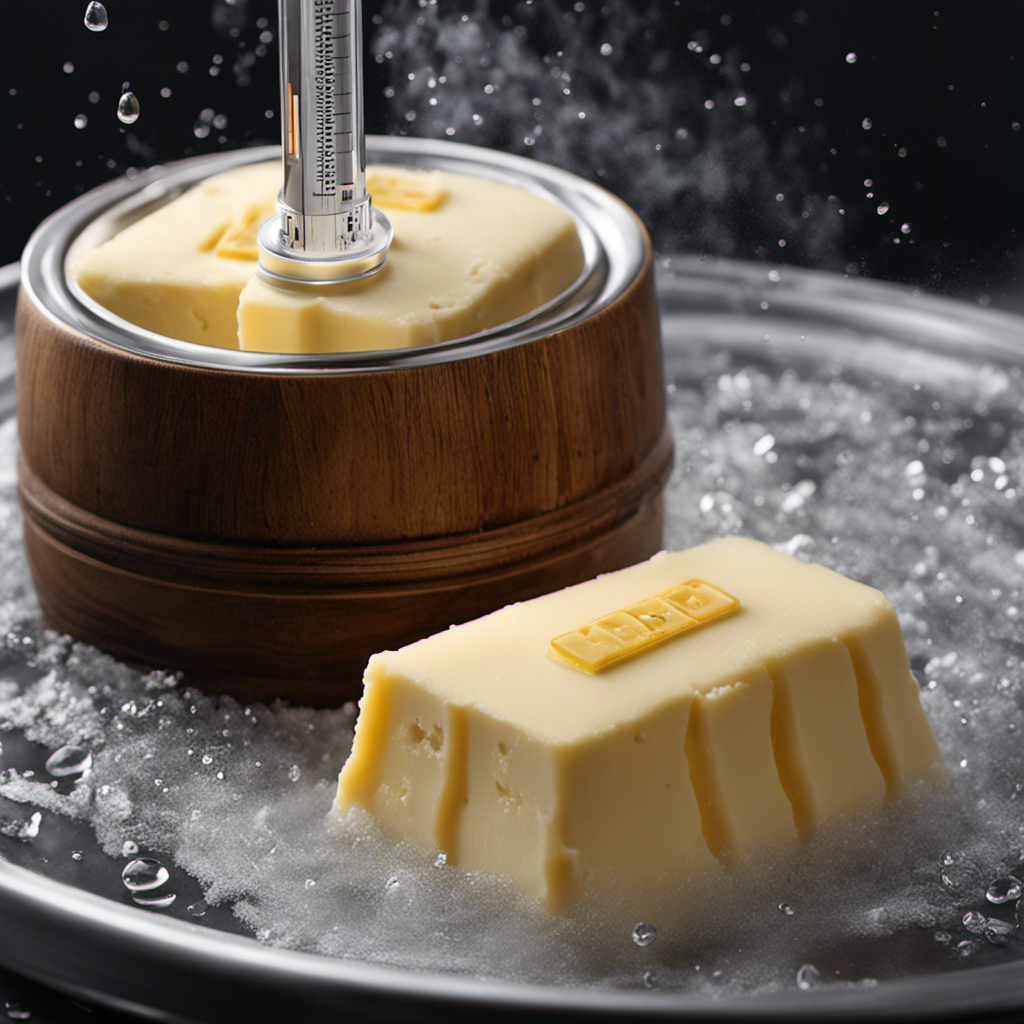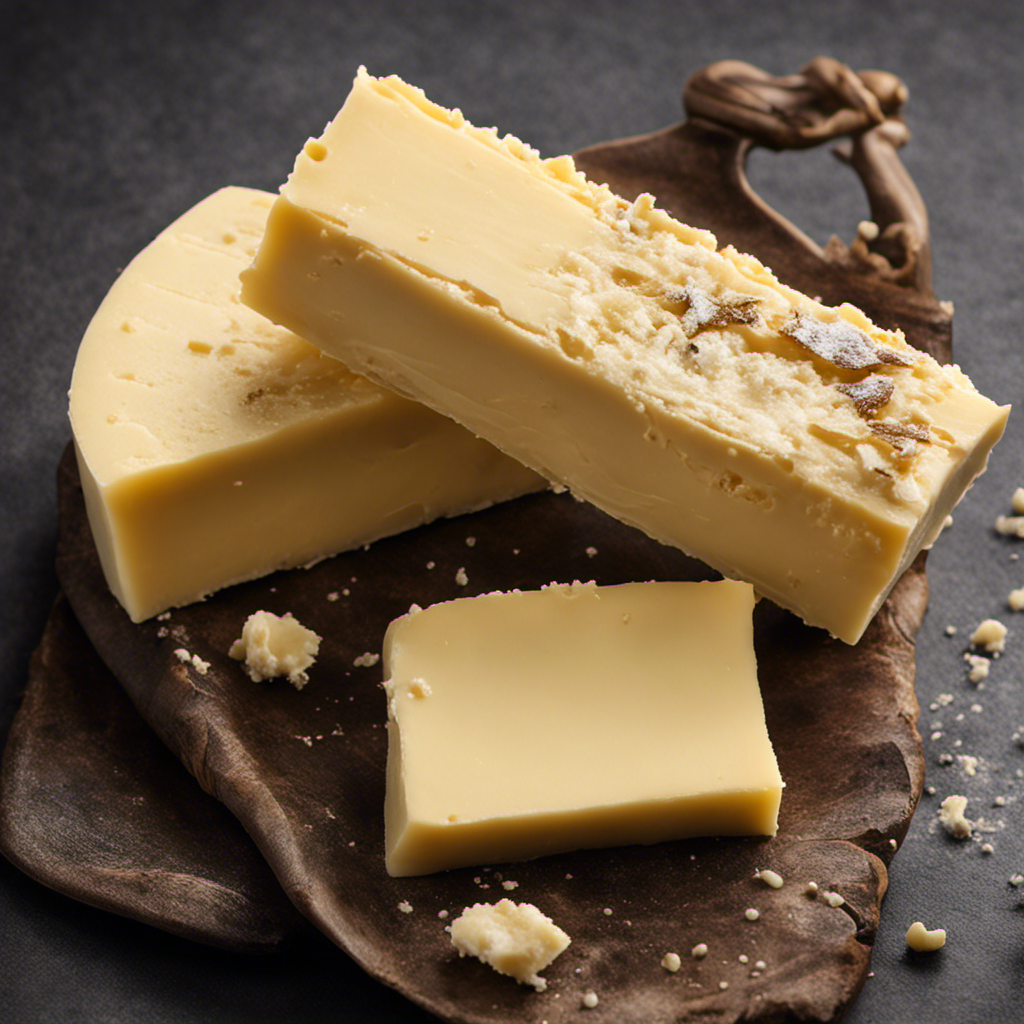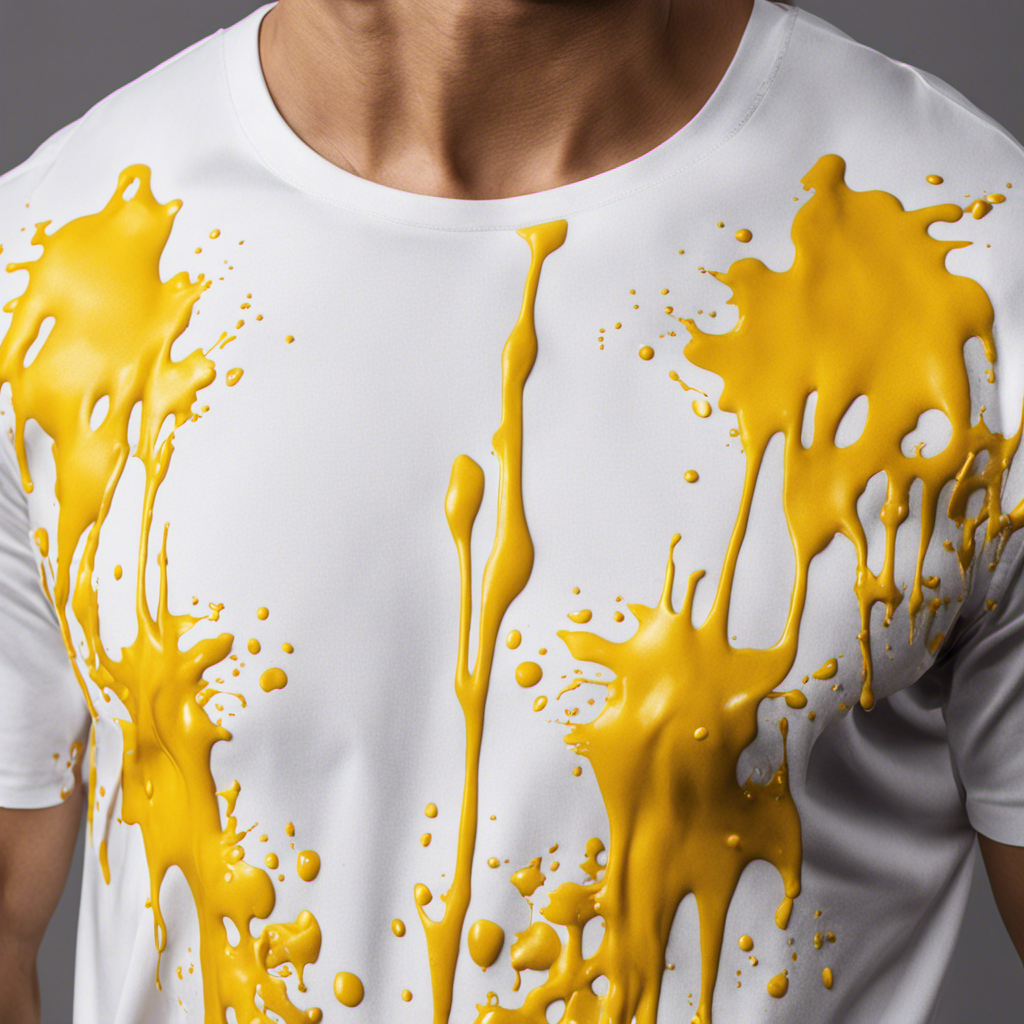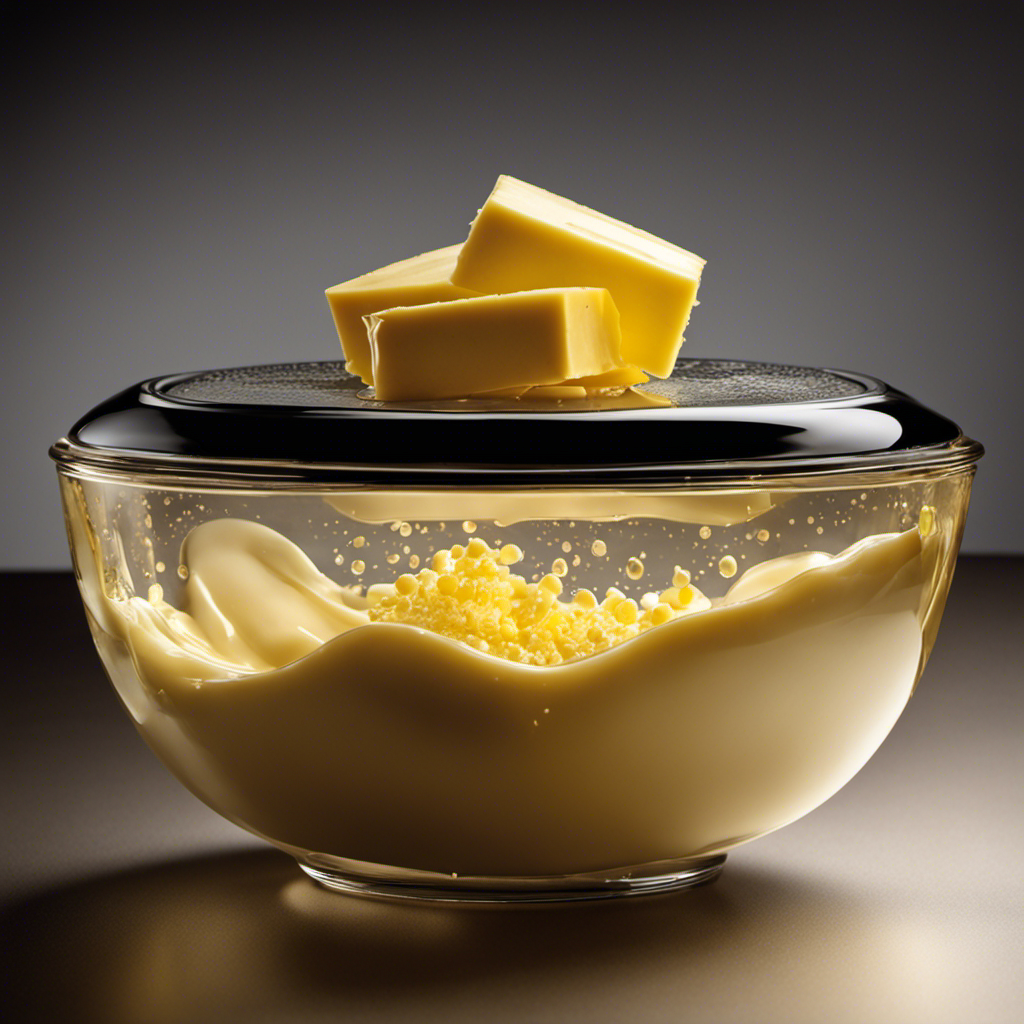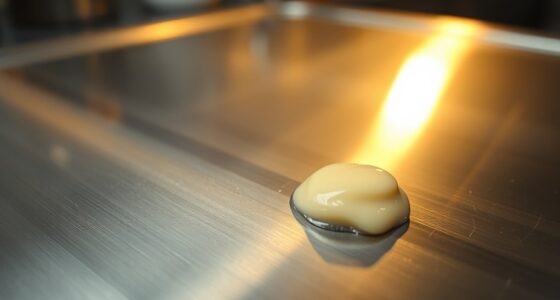Removing butter stains from suede can seem daunting, but rest assured, I’ve got your back. I’ll share my knowledge and walk you through each step of the process.
With the right materials and techniques, you’ll be able to remove that greasy stain and restore your suede to its former glory.
So let’s roll up our sleeves and get ready to tackle this buttery challenge head-on!
Key Takeaways
- Differentiate between oil-based and water-based stains
- Act quickly and blot the excess butter, avoiding rubbing
- Use a clean white cloth, suede brush, and suede cleaner designed for oil-based stains
- Regularly brush suede to remove surface dirt and dust
Understanding the Stain
I can feel the frustration of trying to understand how this stain happened on my suede.
As a professional cleaner, I know that differentiating between oil-based and water-based stains is crucial in tackling the problem effectively. Butter stains on suede are typically oil-based, as butter is a fatty substance.
Common causes of butter stains on suede include accidental spills while eating, cooking, or even butter-related accidents like a misplaced pat of butter on a suede couch or jacket.
To remove butter from suede, you’ll need a clean white cloth, a suede brush, and a suede cleaner specifically designed for oil-based stains. It’s important to act quickly and blot the excess butter with the cloth, avoiding rubbing as it may spread the stain further.
Following a step-by-step procedure and taking necessary precautions will ensure a successful removal process.
Pre-Treatment Steps
First, I’ll need to carefully assess the suede to determine the best pre-treatment steps. As a professional cleaner, I understand the importance of thoroughly understanding the nature of the stain before proceeding with any cleaning process.
When it comes to removing butter from suede, prevention is always key. However, accidents happen, and household remedies can sometimes help. Before attempting any treatment, it’s crucial to gather the necessary materials, such as a clean, white cloth and a suede brush.
Next, gently blot the stained area with the cloth to remove any excess butter. Avoid rubbing, as it can push the stain further into the suede. Then, use the suede brush to gently lift any remaining butter particles.
Gentle Cleaning Techniques
To maintain the delicate texture of the fabric, gently brushing the suede in one direction can help remove any remaining particles.
When it comes to cleaning butter stains from suede, it’s essential to use the right products and techniques to avoid damaging the material. Professional suede cleaning products are specifically formulated to effectively remove stains without causing harm. These products typically contain enzymes that break down the fats in the butter, making it easier to remove.
Alternatively, there are DIY suede stain removers that can be made at home using common household items like vinegar or cornstarch. However, it’s important to note that these homemade solutions may not be as effective as professional products and could potentially cause discoloration or damage to the suede.
Always test any cleaning method or product on a small, inconspicuous area before applying it to the entire stain.
Removing Residual Grease
Using a suede cleaning product that contains enzymes can effectively break down residual grease stains on the fabric. When it comes to removing tough stains like butter from suede, a professional suede cleaning approach is necessary.
Here’s a step-by-step guide to help you tackle those stubborn grease stains:
- Start by blotting the butter stain with a clean, dry cloth to remove any excess grease.
- Apply a small amount of the suede cleaning product onto a soft brush or cloth.
- Gently scrub the stained area in circular motions, focusing on the greasy spots.
- Allow the cleaning product to sit on the fabric for a few minutes, allowing the enzymes to break down the grease.
- Use a clean, damp cloth to wipe away the cleaning product and any residue.
Remember to always follow the instructions on the suede cleaning product and exercise caution when dealing with delicate fabrics. For best results, consult with a professional suede cleaner or leather specialist who can provide expert advice tailored to your specific needs.
Protecting and Maintaining Suede
I find that regular brushing and applying a suede protector spray can help maintain the softness and durability of my suede items. Suede protection tips are essential to ensure that my favorite suede pieces last for a long time.
By using a soft-bristled brush, I gently remove any surface dirt or dust from the suede fabric. This not only keeps the suede looking clean but also prevents any particles from settling into the material.
Additionally, applying a suede protector spray creates a protective barrier, guarding against stains and spills. This suede maintenance hack is especially useful in preventing butter stains from setting in.
A professional cleaner or leather specialist would recommend using a specialized suede cleaner, along with a microfiber cloth, for removing butter stains. They’d explain that the cleaning process involves gently dabbing the stained area with the cleaner, avoiding excessive rubbing that could damage the suede.
Frequently Asked Questions
Can I Use a Regular Laundry Detergent to Remove Butter Stains From Suede?
Using regular laundry detergent may not be effective in removing butter stains from suede. It is recommended to use a leather cleaner specifically designed for suede. Here’s how to remove grease stains from suede.
Is It Safe to Use a Hairdryer to Speed up the Drying Process After Cleaning Suede?
Using a hairdryer to speed up the drying process after cleaning suede is effective but may not be safe. The high heat can damage the delicate material. It’s best to consult a professional for advice on removing butter stains from suede.
Can I Use a Suede Brush to Remove Butter Stains From Suede?
Using a suede eraser is an effective method for removing butter stains from suede. Additionally, cornstarch can be used as a natural suede cleaner. I recommend following the step-by-step instructions provided by a professional cleaner or leather specialist.
Is It Possible to Remove Butter Stains From Suede Shoes?
Yes, it is possible to remove butter stains from suede shoes. There are effective home remedies, such as using cornstarch or white vinegar. If the stains are stubborn, professional cleaning options are available from leather specialists.
Can I Use Vinegar to Remove Butter Stains From Suede?
Yes, vinegar can be used as an alternative to remove butter stains from suede. However, it’s important to be cautious as vinegar can potentially damage suede. Using baking soda as a gentle abrasive can also help in removing the stains.
Conclusion
In conclusion, removing butter stains from suede requires a thorough understanding of the stain, pre-treatment steps, gentle cleaning techniques, and removing residual grease.
It’s crucial to protect and maintain suede to prevent further damage. By following the detailed instructions provided by a professional cleaner or leather specialist, you can effectively eliminate butter stains from suede while ensuring the longevity of the material.
Remember, knowledge and expertise are key when dealing with delicate fabrics like suede.
